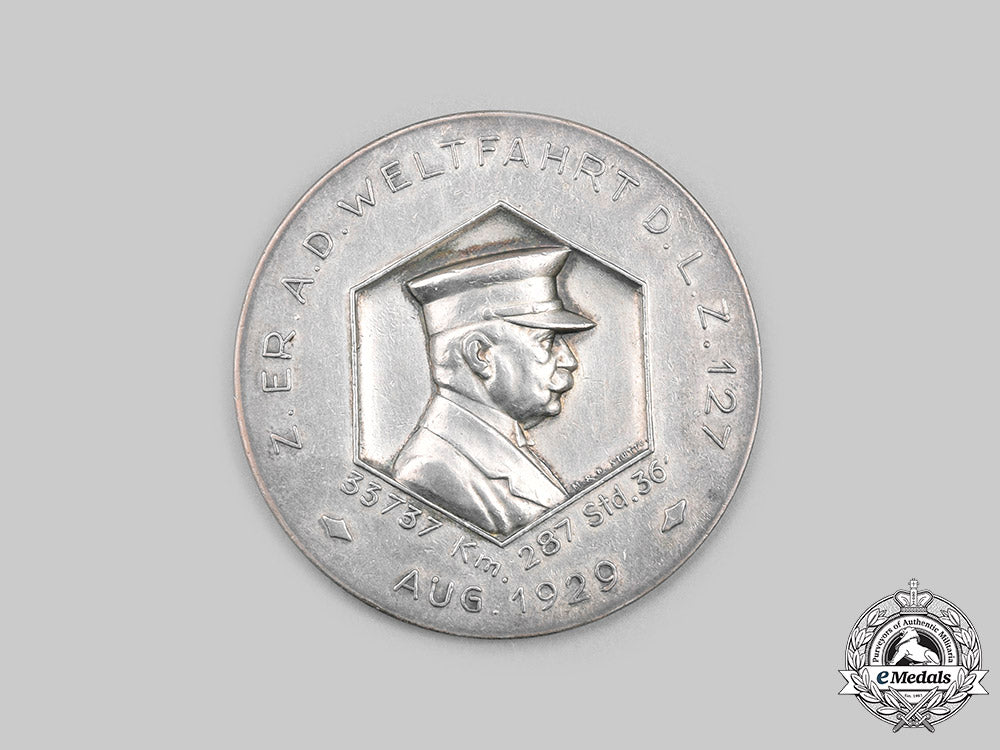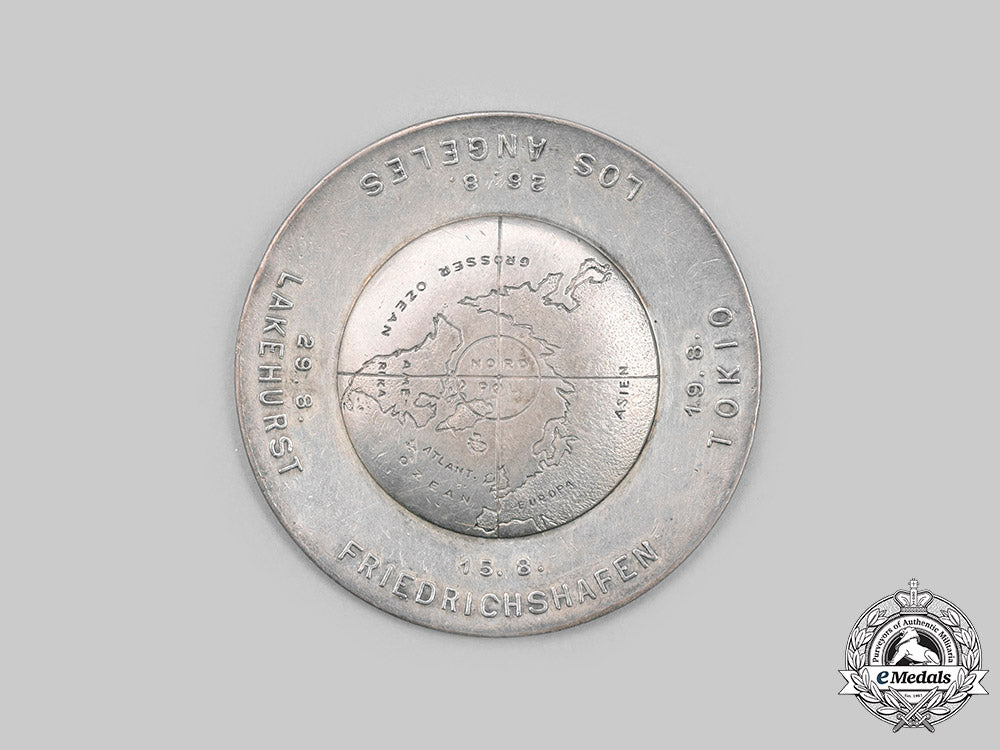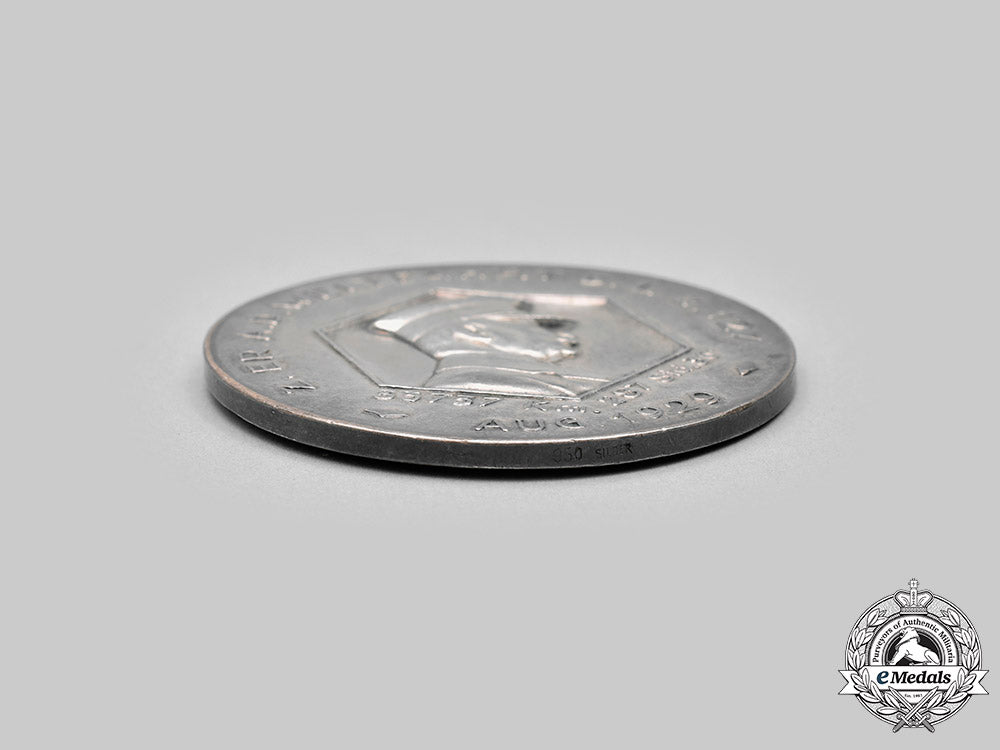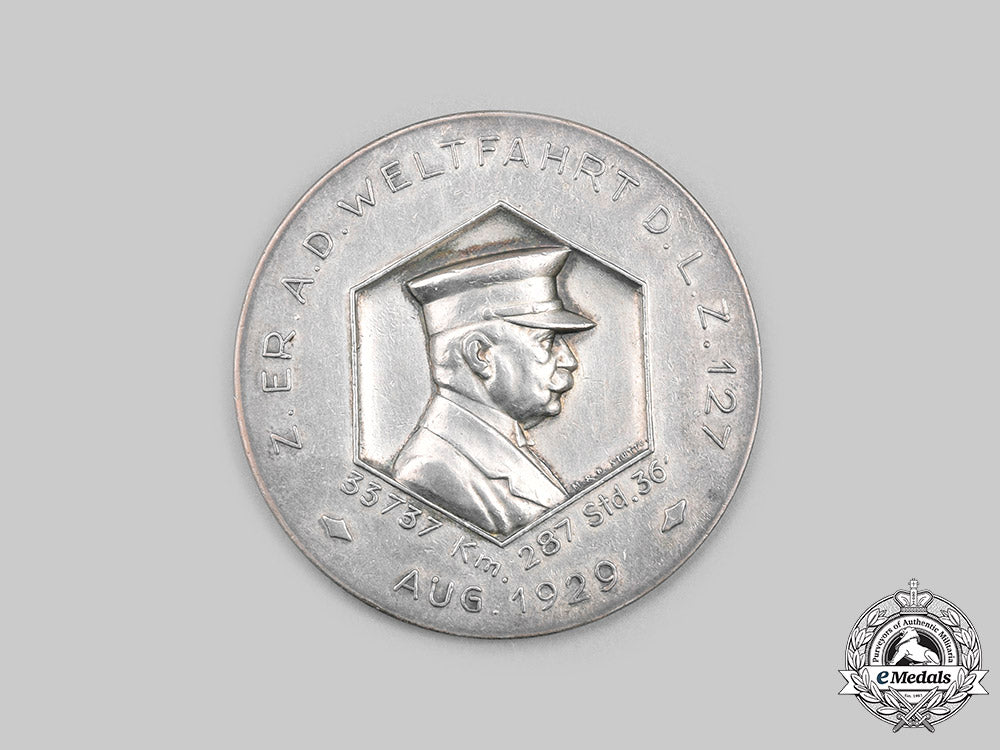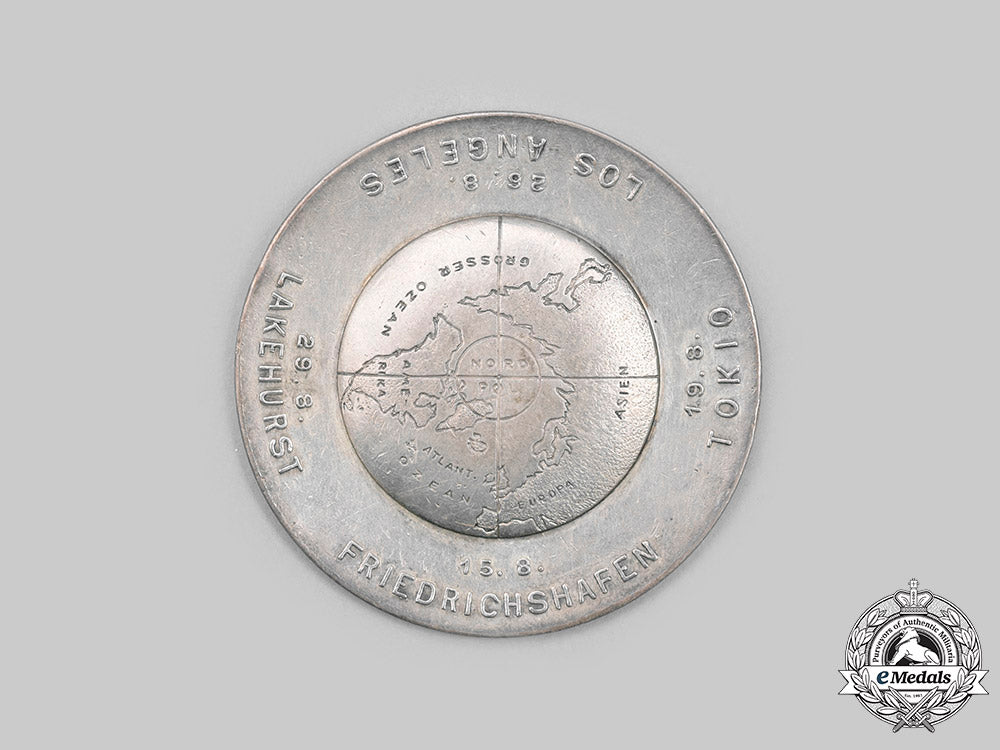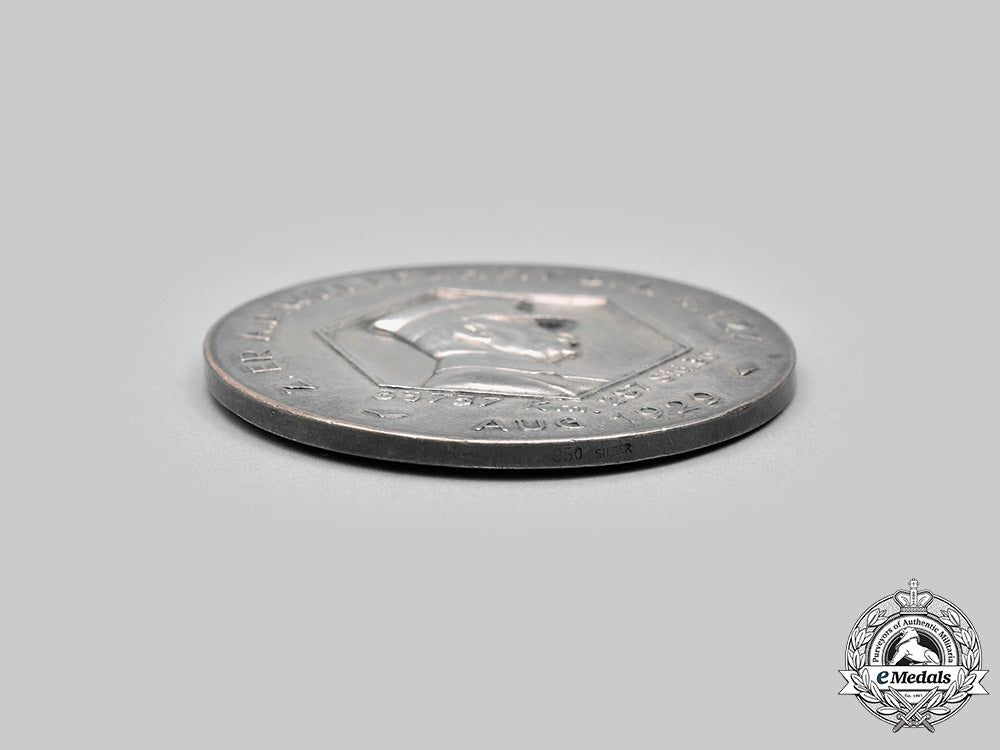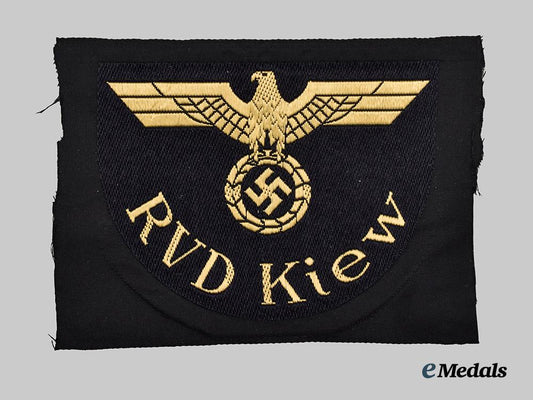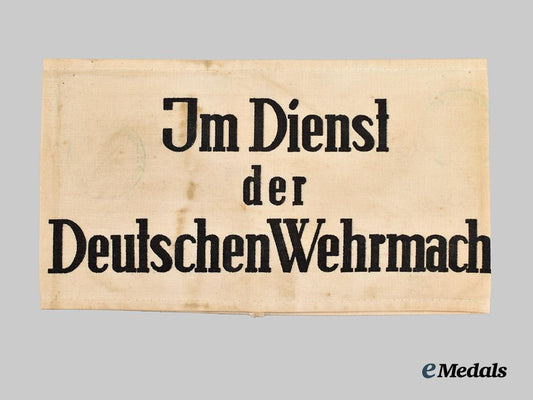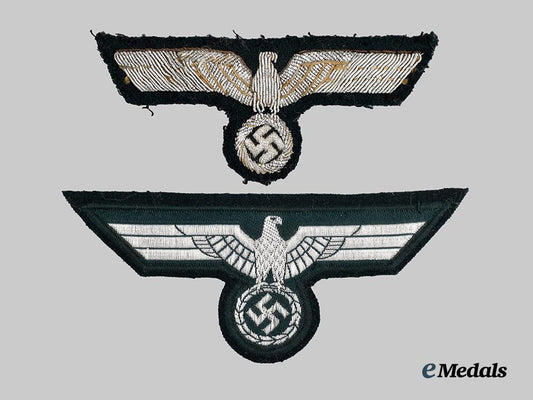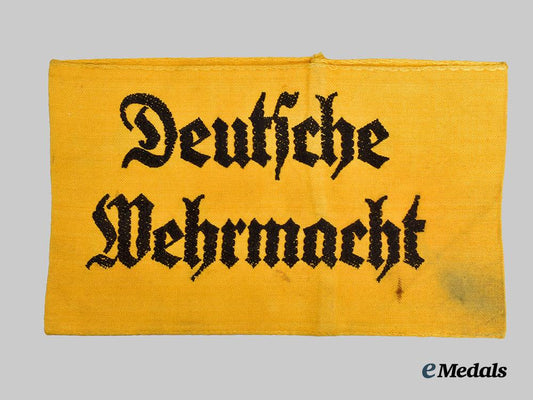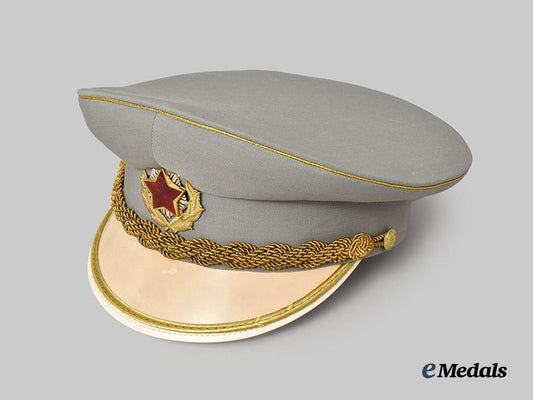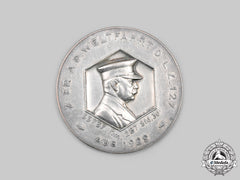
LOADING ...
In response to evolving domestic opinion, eMedals Inc has made the conscious decision to remove the presentation of German Third Reich historical artifacts from our online catalogue. For three decades, eMedals Inc has made an effort to preserve history in all its forms. As historians and researchers, we have managed sensitive articles and materials with the greatest of care and respect for their past and present social context. We acknowledge the growing sentiments put forth by the Canadian public and have taken proactive actions to address this opinion.
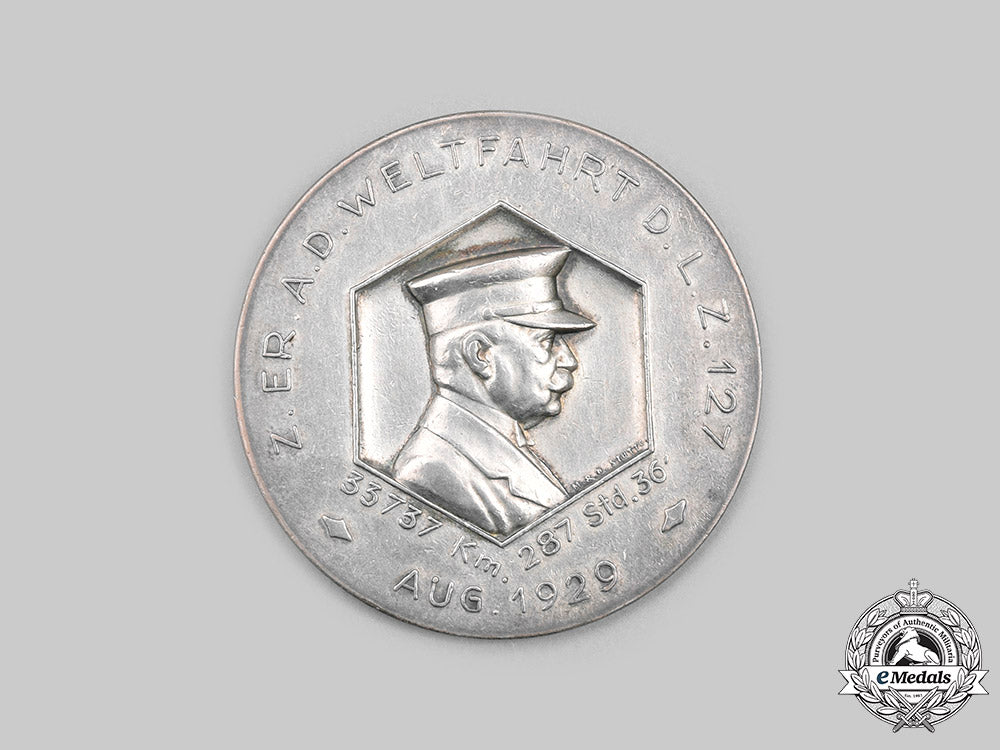
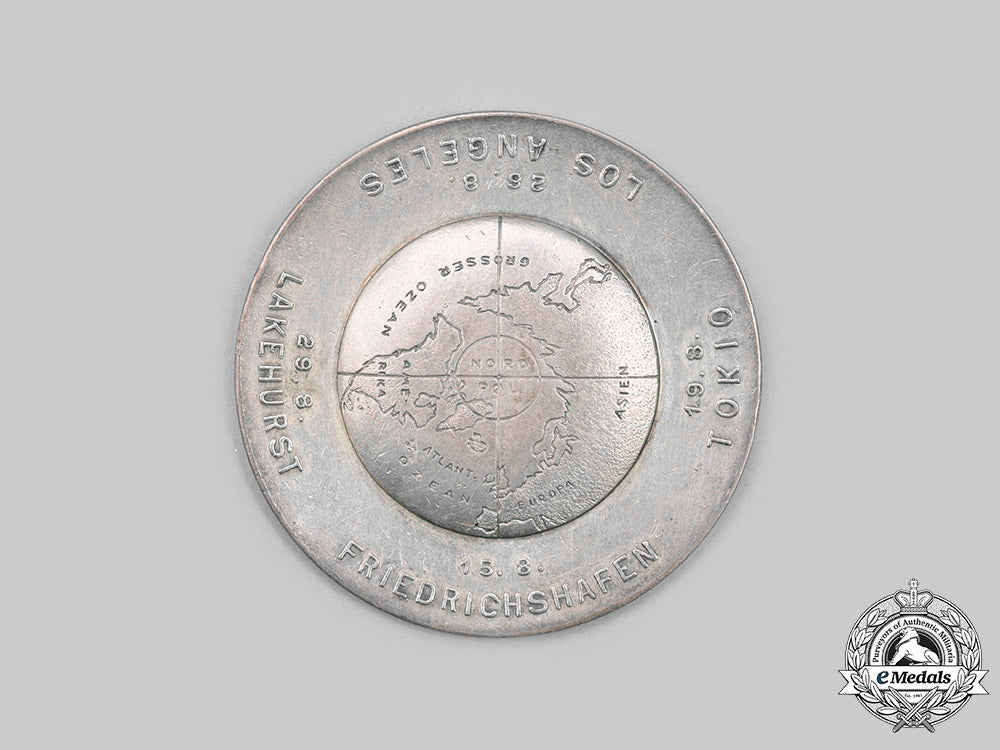
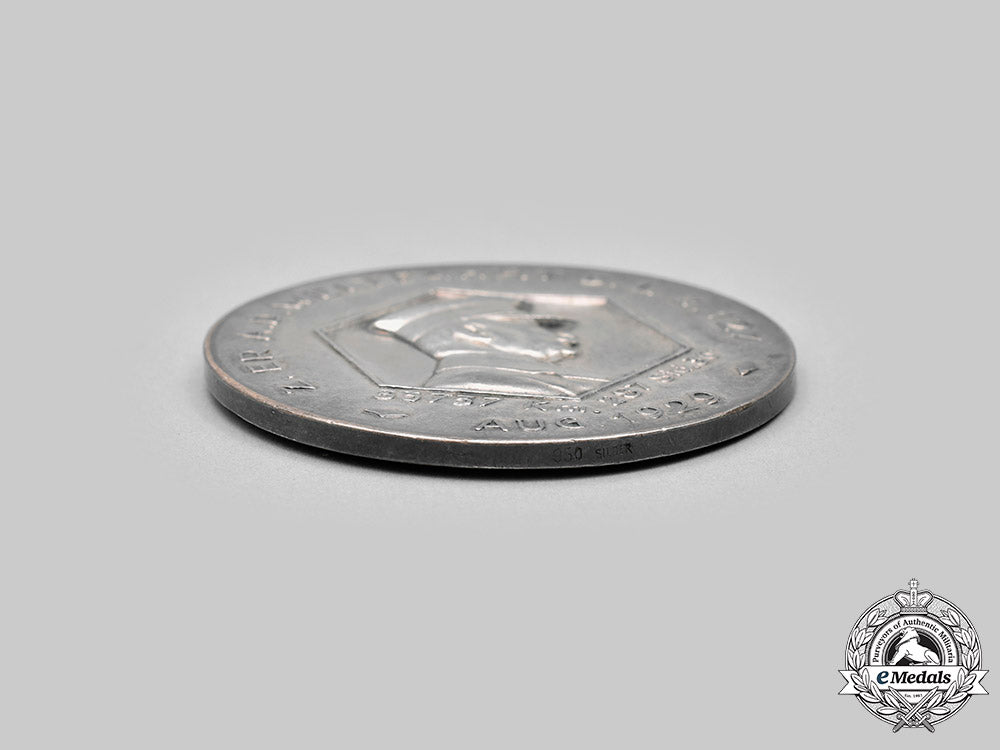
Germany, Weimar Republic. A Large Circumnavigation Of The Globe By Lz 127 "Graf Zeppelin" Medal 1929
Germany, Weimar Republic. A Large Circumnavigation Of The Globe By Lz 127 "Graf Zeppelin" Medal 1929
SKU: ITEM: G48894
Current Bid:
Your Max Bid:
Bid History:
Time Remaining:
Couldn't load pickup availability
Shipping Details
Shipping Details
eMedals offers rapid domestic and international shipping. Orders received prior to 12:00pm (EST) will be shipped on the same business day.* Orders placed on Canadian Federal holidays will be dispatched the subsequent business day. Courier tracking numbers are provided for all shipments. All items purchased from eMedals can be returned for a full monetary refund or merchandise credit, providing the criteria presented in our Terms & Conditions are met. *Please note that the addition of a COA may impact dispatch time.
Shipping Details
eMedals offers rapid domestic and international shipping. Orders received prior to 12:00pm (EST) will be shipped on the same business day.* Orders placed on Canadian Federal holidays will be dispatched the subsequent business day. Courier tracking numbers are provided for all shipments. All items purchased from eMedals can be returned for a full monetary refund or merchandise credit, providing the criteria presented in our Terms & Conditions are met. *Please note that the addition of a COA may impact dispatch time.
Description
Description
In silvered bronze, obverse illustrating the right-facing bust of Dr. Hugo Eckener within a hexagon-shaped frame, inscribed "33737 Km. / 287 Std. 36' " just below the frame, surrounded by the inscription "Z. ER. A.D. WELTFAHRT D. L.Z. 127 / AUG. 1929" (In Commemoration of the World Trip of LZ 127 / August 1929), engraver marked "M.&.W. STUTTG." (Karl Meissner and Paul Wurst, Stuttgart) beside the bust, reverse illustrating a view centring around the North Pole, featuring Europe, Asia and North America, with four destinations and corresponding dates of arrivals indicated on the map: "FRIEDRICHSCHFEN 15.8. / TOKIO 19.8. / LOS ANGELES 26.8. / LAKEHURST 29.8.", measuring 50.7 mm in diameter, bruised, edge nicks, contact marks, very fine.
Footnote: 1. LZ 127 Graf Zeppelin (Deutsches Luftschiff Zeppelin 127) was a German passenger-carrying, hydrogen-filled rigid airship that flew from 1928 to 1937. It offered the first commercial transatlantic passenger flight service. Named after the German airship pioneer Ferdinand von Zeppelin, a count (Graf) in the German nobility, it was conceived and operated by Dr Hugo Eckener, the chairman of Luftschiffbau Zeppelin. The American newspaper publisher William Randolph Hearst's media empire paid half the cost, in order to fly Graf Zeppelin around the world, with four staff on the flight; Drummond-Hay, Karl von Wiegand, the Australian explorer Hubert Wilkins, and the cameraman Robert Hartmann. Drummond-Hay became the first woman to circumnavigate the world by air. Hearst stipulated that the flight in August 1929 officially start and finish at Lakehurst. Round-the-world tickets were sold for almost $3000 (equivalent to $45,000 in 2019), but most participants had their costs paid for them. The flight's expenses were offset by the carriage of souvenir mail between Lakehurst, Friedrichshafen, Tokyo, and Los Angeles. Graf Zeppelin set off from Lakehurst on August 8th, heading eastwards. The ship refuelled at Friedrichshafen, then continued across Eastern Europe and the Soviet Union to Tokyo. After five days at a former German airship shed that had been removed from Jüterbog and rebuilt at Kasumigaura Naval Air Station, Graf Zeppelin continued across the Pacific to California. Eckener delayed crossing the coast at San Francisco's Golden Gate so as to come in near sunset for aesthetic effect. The ship landed at Mines Field in Los Angeles, completing the first ever nonstop flight across the Pacific Ocean. The takeoff from Los Angeles was difficult because of high temperatures and an inversion layer. To lighten the ship, six crew were sent on to Lakehurst by aeroplane. The airship suffered minor damage from a tail strike and barely cleared electricity cables at the edge of the field. The Graf Zeppelin arrived back at Lakehurst from the west on the morning of August 29th, three weeks after it had departed to the east. Flying time for the four Lakehurst to Lakehurst legs was 12 days, 12 hours, and 13 minutes; the entire circumnavigation (including stops) took 21 days, 5 hours, and 31 minutes to cover 33,234 km (20,651 mi; 17,945 nmi). It was the fastest circumnavigation of the globe at the time. 2. Hugo Eckener (August 10, 1868 - August 14, 1954) was the manager of the Luftschiffbau Zeppelin during the inter-war years, and also the commander of the famous Graf Zeppelin for most of its record-setting flights, including the first airship flight around the world, making him the most successful airship commander in history. He was also responsible for the construction of the most successful type of airships of all time. An anti-Nazi who was invited to campaign as a moderate in the German presidential elections, he was blacklisted by that regime and eventually sidelined.
Description
In silvered bronze, obverse illustrating the right-facing bust of Dr. Hugo Eckener within a hexagon-shaped frame, inscribed "33737 Km. / 287 Std. 36' " just below the frame, surrounded by the inscription "Z. ER. A.D. WELTFAHRT D. L.Z. 127 / AUG. 1929" (In Commemoration of the World Trip of LZ 127 / August 1929), engraver marked "M.&.W. STUTTG." (Karl Meissner and Paul Wurst, Stuttgart) beside the bust, reverse illustrating a view centring around the North Pole, featuring Europe, Asia and North America, with four destinations and corresponding dates of arrivals indicated on the map: "FRIEDRICHSCHFEN 15.8. / TOKIO 19.8. / LOS ANGELES 26.8. / LAKEHURST 29.8.", measuring 50.7 mm in diameter, bruised, edge nicks, contact marks, very fine.
Footnote: 1. LZ 127 Graf Zeppelin (Deutsches Luftschiff Zeppelin 127) was a German passenger-carrying, hydrogen-filled rigid airship that flew from 1928 to 1937. It offered the first commercial transatlantic passenger flight service. Named after the German airship pioneer Ferdinand von Zeppelin, a count (Graf) in the German nobility, it was conceived and operated by Dr Hugo Eckener, the chairman of Luftschiffbau Zeppelin. The American newspaper publisher William Randolph Hearst's media empire paid half the cost, in order to fly Graf Zeppelin around the world, with four staff on the flight; Drummond-Hay, Karl von Wiegand, the Australian explorer Hubert Wilkins, and the cameraman Robert Hartmann. Drummond-Hay became the first woman to circumnavigate the world by air. Hearst stipulated that the flight in August 1929 officially start and finish at Lakehurst. Round-the-world tickets were sold for almost $3000 (equivalent to $45,000 in 2019), but most participants had their costs paid for them. The flight's expenses were offset by the carriage of souvenir mail between Lakehurst, Friedrichshafen, Tokyo, and Los Angeles. Graf Zeppelin set off from Lakehurst on August 8th, heading eastwards. The ship refuelled at Friedrichshafen, then continued across Eastern Europe and the Soviet Union to Tokyo. After five days at a former German airship shed that had been removed from Jüterbog and rebuilt at Kasumigaura Naval Air Station, Graf Zeppelin continued across the Pacific to California. Eckener delayed crossing the coast at San Francisco's Golden Gate so as to come in near sunset for aesthetic effect. The ship landed at Mines Field in Los Angeles, completing the first ever nonstop flight across the Pacific Ocean. The takeoff from Los Angeles was difficult because of high temperatures and an inversion layer. To lighten the ship, six crew were sent on to Lakehurst by aeroplane. The airship suffered minor damage from a tail strike and barely cleared electricity cables at the edge of the field. The Graf Zeppelin arrived back at Lakehurst from the west on the morning of August 29th, three weeks after it had departed to the east. Flying time for the four Lakehurst to Lakehurst legs was 12 days, 12 hours, and 13 minutes; the entire circumnavigation (including stops) took 21 days, 5 hours, and 31 minutes to cover 33,234 km (20,651 mi; 17,945 nmi). It was the fastest circumnavigation of the globe at the time. 2. Hugo Eckener (August 10, 1868 - August 14, 1954) was the manager of the Luftschiffbau Zeppelin during the inter-war years, and also the commander of the famous Graf Zeppelin for most of its record-setting flights, including the first airship flight around the world, making him the most successful airship commander in history. He was also responsible for the construction of the most successful type of airships of all time. An anti-Nazi who was invited to campaign as a moderate in the German presidential elections, he was blacklisted by that regime and eventually sidelined.
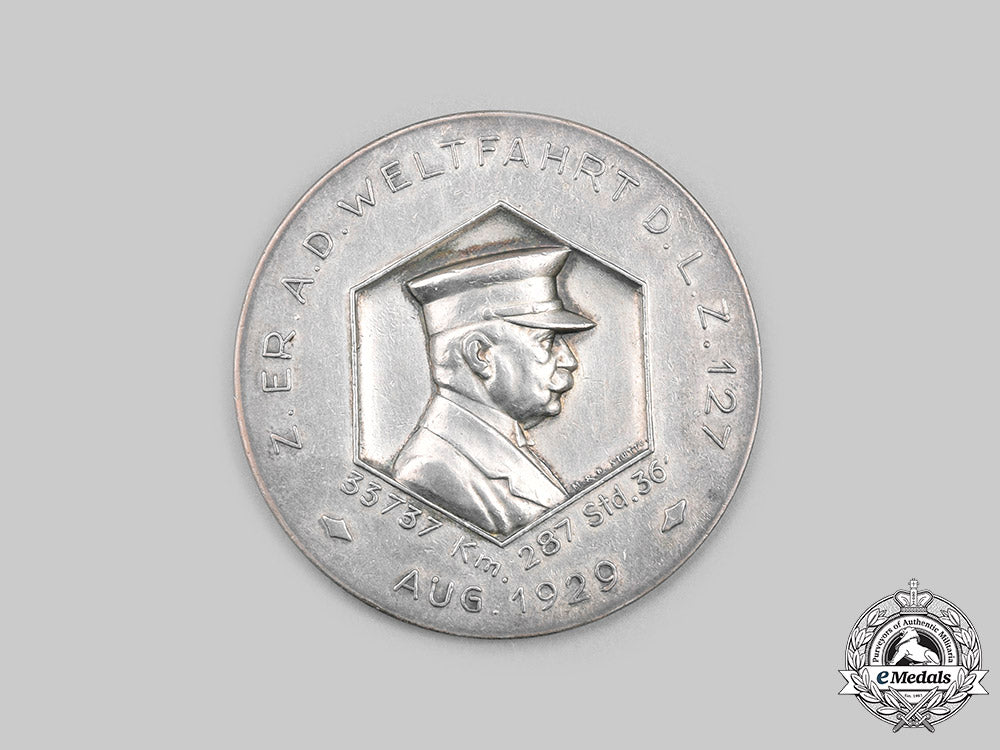
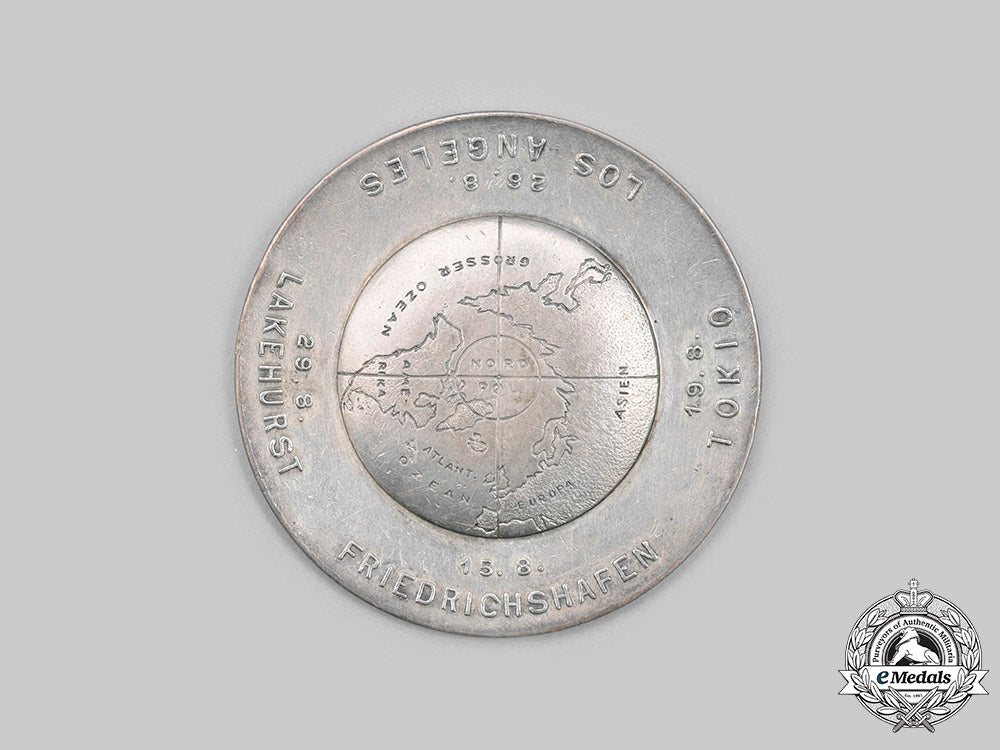
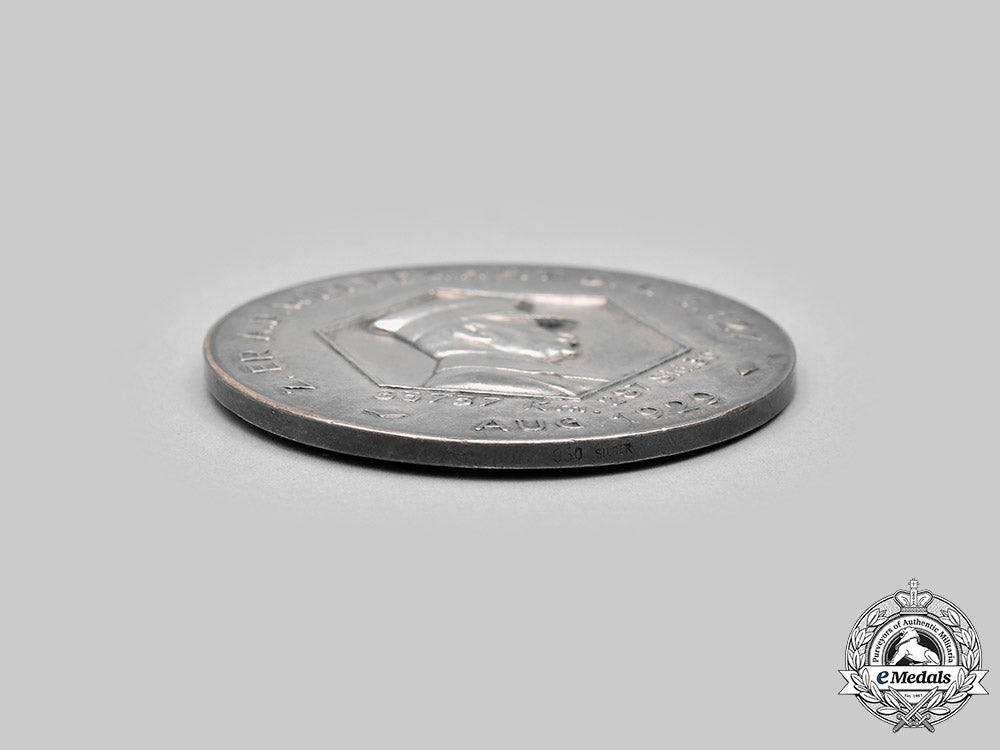
You May Also Like
Germany, Third Reich. A Mint Reichsverkehrsdirektion Kiev District Sleeve Insignia
G60373
Germany, Wehrmacht. A Civilian Auxiliary’s Armband
G60369
Germany, Heer. A Pair of Officer-Grade Breast Eagles
G58960
Germany, Wehrmacht. A Civilian Auxiliary’s Armband
G58956
Yugoslavia, Socialist Federal Republic. A People's Army General's Visor Cap c.1965
EU24061
-
Germany, Third Reich. A Mint Reichsverkehrsdirektion Kiev District Sleeve Insignia
G60373
Add to CartRegular price $108 USDRegular price $0 USD Sale price $108 USDUnit price / per -
Germany, Wehrmacht. A Civilian Auxiliary’s Armband
G60369
Add to CartRegular price $108 USDRegular price $0 USD Sale price $108 USDUnit price / per -
Germany, Heer. A Pair of Officer-Grade Breast Eagles
G58960
Add to CartRegular price $135 USDRegular price $0 USD Sale price $135 USDUnit price / per -
Germany, Wehrmacht. A Civilian Auxiliary’s Armband
G58956
Add to CartRegular price $108 USDRegular price $0 USD Sale price $108 USDUnit price / per -
Yugoslavia, Socialist Federal Republic. A People's Army General's Visor Cap c.1965
EU24061
Add to CartRegular price $540 USDRegular price $0 USD Sale price $540 USDUnit price / per
Do you have a similar item you are interested in selling?
Please complete the form and our client care representatives will contact you.
Sell Item